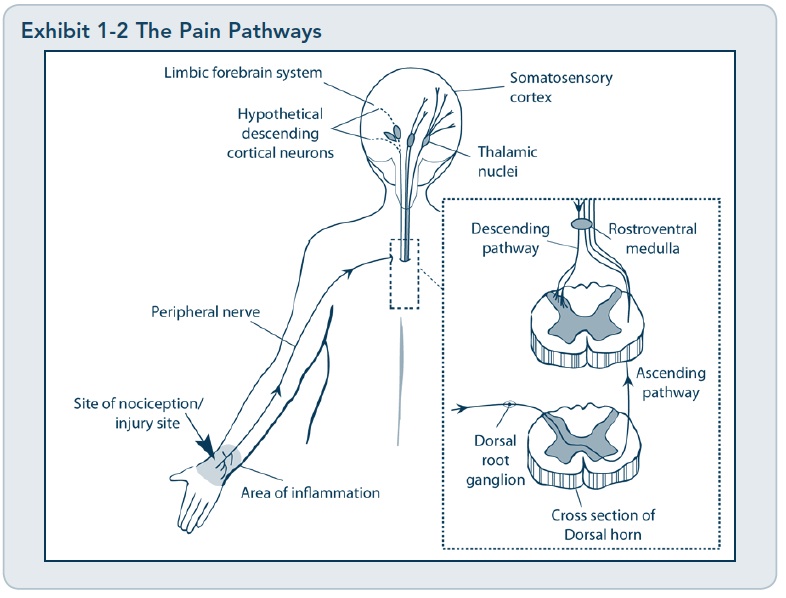

|
A continuing education course for 7 ces
consisting
of reading and taking a post-test on:
Fulfills
CA BBS & BOP mandatory substance abuse training and mandated
prelicensure requirement |
Chronic Pain Impact Chronic pain is not harmless; it has physiological, social, and psychological dimensions that can seriously harm health, functioning, and well-being. As a multidimensional condition with both objective and subjective aspects, CNCP is difficult to assess and treat. Although CNCP can be managed, it usually cannot be completely eliminated. When patients with CNCP have comorbid SUD or are recovering from SUD, a complex condition becomes even more difficult to manage. Pain and Addiction Basics |

maintains responsibility for the program. |
|
Clinicians will be able to: 1) List the advantages, disadvantages and contraindications of pain control treatment with substance abusing populations 2) Discuss the modalities recommended by the consensus panel for pain control with co-occurring substance abuse treatment 3) Identify and describe the neurophysiological processes in both pain control treatments and substance use disorders 4) Describe the various stages of treatment with chronic pain and substance abusing populations 5) Learn how to conduct a careful assessment 7) Discuss that even the best treatment is unlikely to completely eliminate chronic pain, and why efforts to achieve total pain relief can be self-defeating.
|
Treatment Improvement Protocols (TIPs) Treatment Improvement Protocols (TIPs) are developed by the Center for Substance Abuse |
We do adhere to the American Psychological Association's Ethical Principles of Psychologists. Our courses are carefully screened by the Planning Committee to adhere to APA standards. We also require authors who compose Internet courses specifically for us follow APA ethical standards. Many of our courses contain case material, and may use the methods of qualitative research and analysis, in-depth interviews and ethnographic studies. The psychotherapeutic techniques depicted may include play therapy, sandplay therapy, dream analysis, drawing analysis, client and therapist self-report, etc. The materials presented may be considered non-traditional and may be controversial, and may not have widespread endorsement within the profession. www.psychceu.com maintains responsibility for the program and its content. |
All material included in this course is either in the public domain, or used with express permission. |
Cost of the 7 unit course is $88
![]()